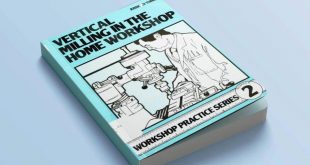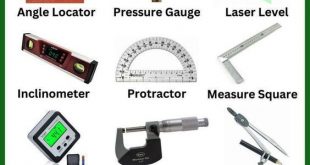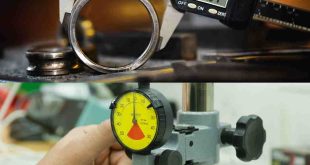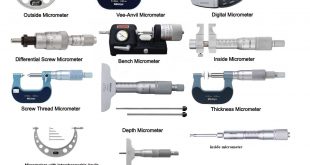🛠️ Workshop Practice Series: Drills, Taps and Dies
The Workshop Practice series is revered among engineers and home machinists, and Volume 12—Drills, Taps and Dies—focuses on the fundamental workshop techniques of drilling accurate holes and creating clean, precise threads. Written by Tubal Cain (Tom Walshaw), this 103‑page guide outlines not only techniques but also best practices, tool selection, sizing tables, and advanced tips.
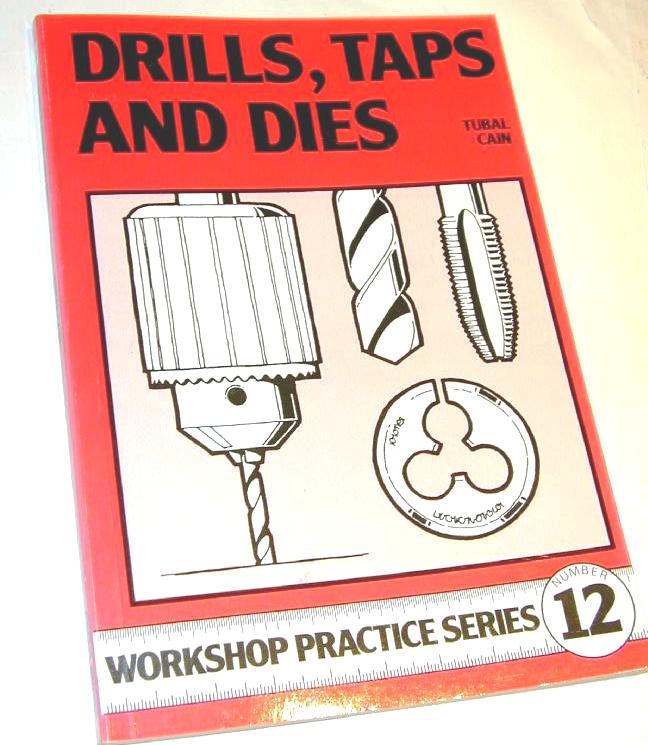
Drills: Generating Accurate Holes
Proper drilling begins with rigid setup—a vise or drill press ensures perpendicularity and avoids wander.
Spade and long-arbor drills are highlighted for clean, straight boreholes, ideal for deep drilling (e.g. connecting rods). These require generous lubrication to reduce friction and wear.
Drilling best practices include selecting the right kinds of drill bits, controlling spindle speed, feed rate, and depth incrementally to achieve accuracy and surface finish.
Tap & Die Techniques: Cutting Threads by Hand
Tap Types & Sizes
Taper taps have a generous lead angle for starting threads.
Plug/intermediate taps deepen threads once started.
Bottoming taps (UK: plug taps) finish threads to the base of blind holes.
Tapping Process
Drill pilot holes using proper sizes from imperial or metric tap drill charts to ensure ~75 % thread depth.
Use cutting oil to enhance chip evacuation and extend tool life.
Follow a cut‑turn‑back technique: turn tap ½ to ⅔ turn forward, then ⅙ turn backward to break chips and avoid binding.
Hand‑tapping alignment is critical. Use jigs or fixtures to maintain coaxial entry, especially for deep thread‑depth holes.
Taps vs. Dies: Internal vs. External Threads
Taps cut internal holes (female threads); dies shape external threads (male threads) on rods.
Both are available as cutting tools and thread chasers. Chasers don’t remove metal; they clean and restore existing threads without weakening them.
Dies may be solid or adjustable—perfect for customising thread fit and repairing worn rods.
Threading Charts & Reference Tables
Tubal Cain’s book includes comprehensive imperial and metric charts of drill sizes, tap and die dimensions, thread gauges, plus special cases and conversion tables—saving time and avoiding costly errors.
Practical Tips & Troubleshooting
Beginners are advised to practise tapping in soft materials like plastic or aluminum before moving to steel.
“Pretty easy with a bit of practice. Just go slow, use cutting oil, and keep it straight. Start with softer metals or plastic.”
For blind holes, frequent chip clearing is essential: back the tap out regularly to avoid jams.
Consider machining threads before tapping: a lathe or screw‑cutting method can improve alignment and speed, especially on larger diameters.
Taps vs. Dies: Internal vs. External Threads
Taps cut internal threads (female), while dies cut external threads (male).
For accuracy and durability, dies may be adjustable or solid.
Thread chasers are used for restoring threads without cutting new ones.
Threading Charts & Reference Tables
Tubal Cain’s book offers a wealth of tables covering:
- Tap drill sizes
- Thread pitches
- Metric and imperial dimensions
These quick-reference charts help avoid mistakes and ensure correct fits.
Practical Tips & Troubleshooting
- Practise threading on softer materials like plastic before moving to metal.
- Use proper lubricants to extend tool life and achieve smoother threads.
- Clear chips frequently when tapping deep holes.
- For precision, consider pre-machining threads on a lathe before using dies.
Why It Matters
Mastering drills, taps, and dies enables precision assembly and fastening, essential in engineering, repair, and fabrication work. Tubal Cain’s guide is concise yet dense with practical wisdom, charts, and real‑world tips ideal for aspiring machinists and seasoned hobbyists alike.
Summary Table
| Operation | Key Tools | Best Practices |
|---|---|---|
| Drilling | Twist & spade drills | Rigid setup, correct feed/speed, proper lubrication |
| Tapping (internal) | Taper, plug, bottom taps | Drill to the chart size, oil, cut‑turn‑back, and align carefully |
| Threading (external) | Solid/adjustable dies | Use appropriate die type, chase threads, and consider pre‑machining on a lathe |
Conclusion & Book 📘
The Drills, Taps and Dies volume in the Workshop Practice Series remains a trusted go‑to reference for skillfully mastering hole creation and threading. With clear explanations, time‑tested methods, and indispensable charts, it’s a compact yet powerful resource—small enough to fit in a toolbox, big enough to elevate your workshop game.
 Boilersinfo Boiler and Mechanical Power Digital Library
Boilersinfo Boiler and Mechanical Power Digital Library
